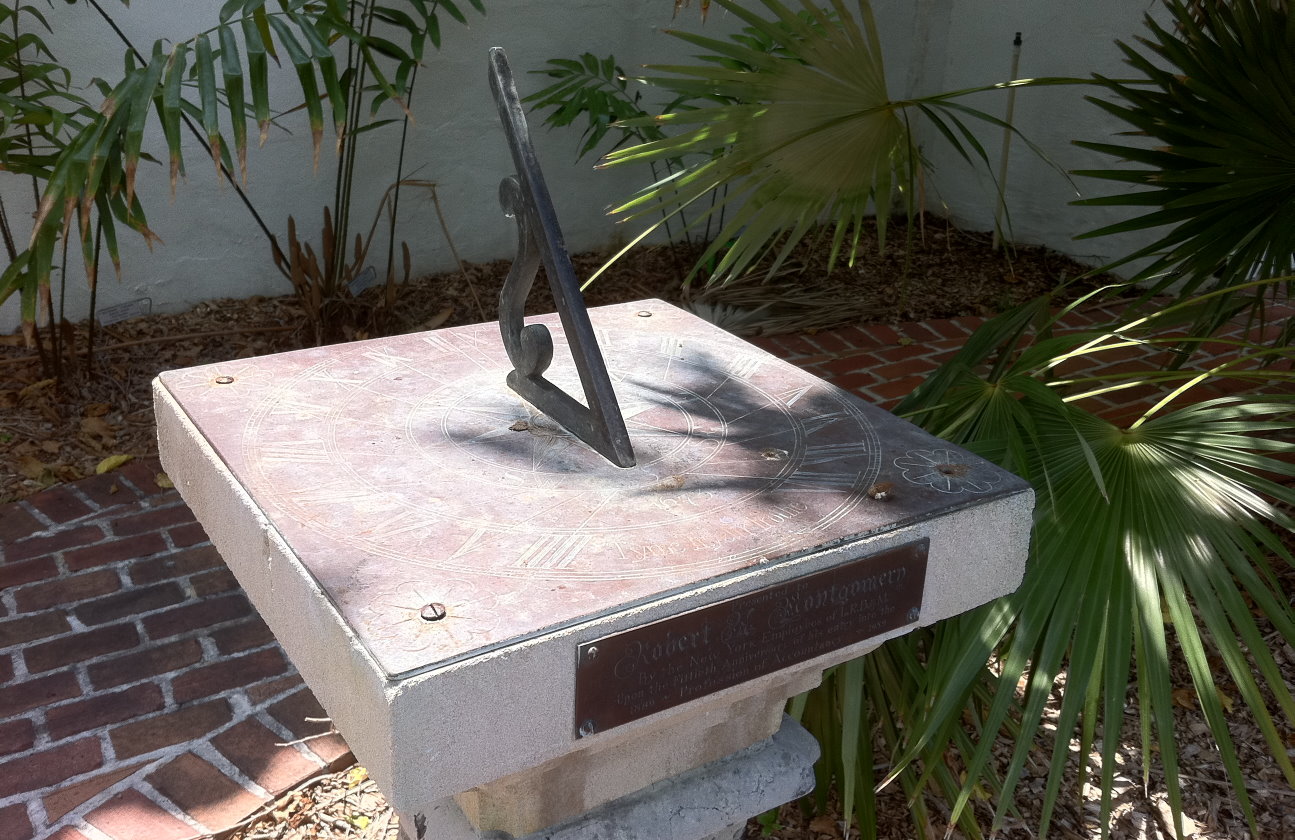Too Complicated
I found this sundial today. This photo was taken at 12:02PM, and I assumed (wrongly) that I can easily read it as such afterwards, but that turns out not to be the case. We all would expect the shadow to be at the noon mark, but it was not.
The installation of many sundials requires knowing the local latitude, the precise vertical direction (e.g., by a level or plumb-bob), and the direction to true North. I am fairly confident that was done correctly for this sundial because it was a sophisticated scientific gift of many years ago.
Sundials indicate the local solar time, unless corrected for some other time. To obtain the official clock time, three types of corrections need to be made:
1. The orbit of the Earth is not perfectly circular and its rotational axis not perfectly perpendicular to its orbit. The sundial's indicates solar time thus varies from clock time by small amounts that change throughout the year. This correction — which may be as great as 15 minutes — is described by the equation of time.
2. The solar time must be corrected for the longitude of the sundial relative to the longitude of the official time zone. This correction is often made by rotating the hour-lines by an angle equal to the difference in longitudes.
3. To adjust for daylight saving time, the sundial must shift the time away from solar time by some amount, usually an hour. This correction may be made in the adjustment plaque, or by numbering the hour-lines with two sets of numbers.
If you click on the photo, you will notice that there is a very intricate set of lines engraved on the plane that receives the light and the shadow of the gnomon which is the ornate shadow-casting object.
So, do I do all these corrections to read this clock, or do I look in the metadata of the original photo to read the time this photo was taken? Hhhmmm...? Oh, behave... it's 12:02 PM.



No comments:
Post a Comment